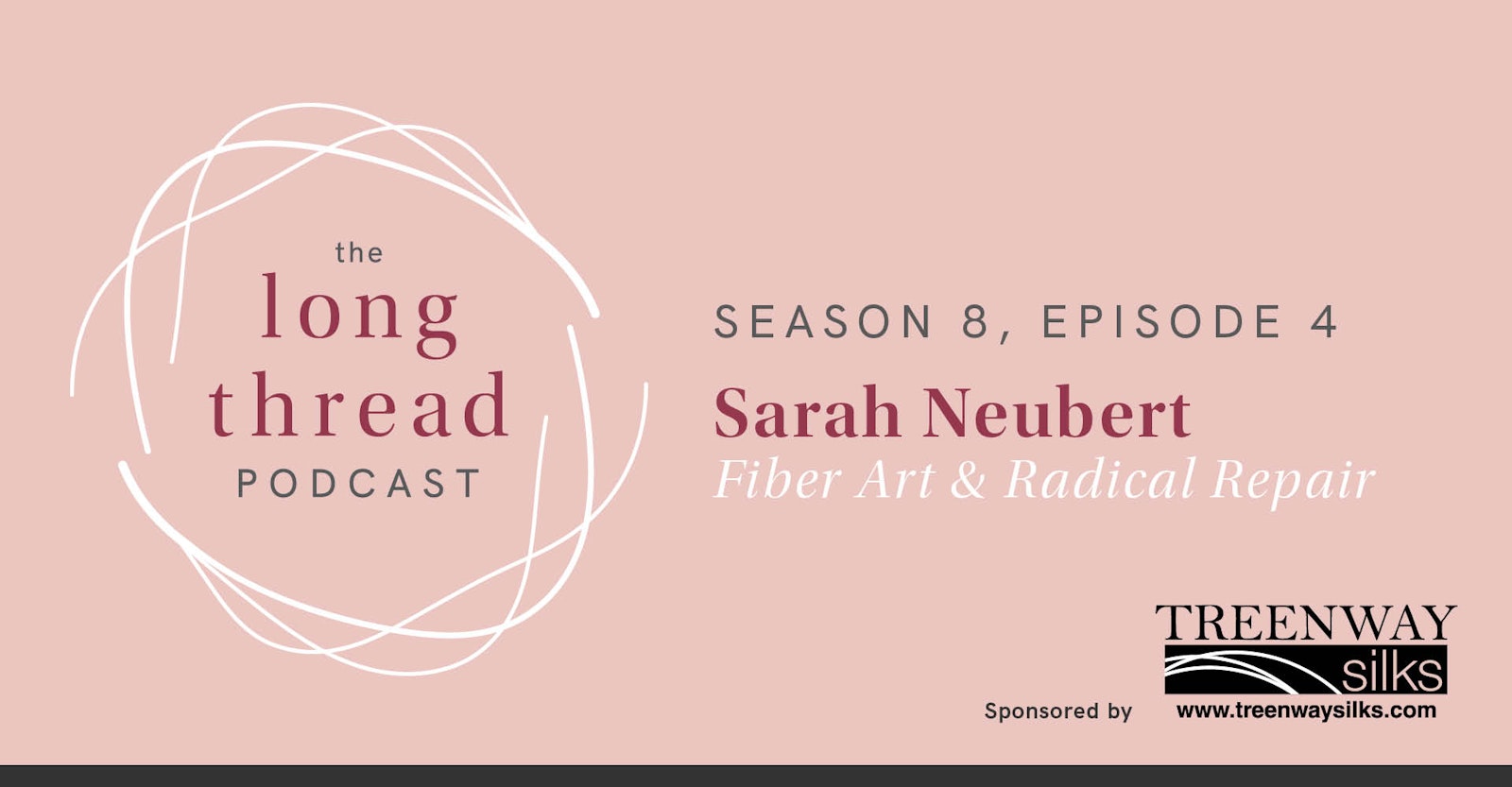Subscribe to The Long Thread Podcast:


The scale of Sarah Neubert’s work varies from miniature to monumental, from small pieces such as earrings to room-sized installations. She dreams of creating entire woven environments that are sensory and tactile, like cocoons or sanctuaries of fiber. Working on a large scale allows her to explore new techniques and push the boundaries of her art. However, she also appreciates the sense of accomplishment that comes from creating small, wearable pieces.
Her classes at the upcoming Weave Together with Handwoven event in February 2024 will let students work on a small tapestry loom to explore some of her favorite subjects. When Sarah teaches tapestry weaving with nontraditional wefts, she often brings found and foraged materials and invites students to bring their own elements to incorporate. Although these may be nontraditional (and even sometimes non-yarn), the weaving skills to incorporate and stabilize them strengthen the student’s grasp of weaving fundamentals. A class in textural weaving includes hand-manipulated techniques, traditional skills that she employs in very nontraditional ways.
One of her recent projects, a Woven Upholstery Mending tutorial, started with a refusal to just dispose of the couch that her cats had clawed. Using her weaving skills in a different application, she repaired her couch with rope and sturdy tools. When she shared her project and results on social media, the interest and enthusiasm were overwhelming. Sarah found herself designing and filming a course on how to create your own woven mends on furniture.
Instead of charging to view the class, Sarah has posted it on YouTube on a donation-based model in hopes of keeping other couches out of landfills. “I think having an energetic exchange is important in a lot of spaces, and I was really grateful for the people that donated,” she says.
Weaving isn’t just a form of art for Sarah, it’s also therapeutic. At first accidentally and now deliberately, she has found relief from anxiety and an opportunity to process her emotions while working at the loom. She experiences this as a flow state, an opportunity to heal. Although her early experiences as a weaver were fraught with perfectionism, she now explores how to make a piece the best she can . . . and then make room for the next project.
This episode is brought to you by:

Treenway Silks is where weavers, spinners, knitters and stitchers find the silk they love. Select from the largest variety of silk spinning fibers, silk yarn, and silk threads & ribbons at TreenwaySilks.com. You'll discover a rainbow of colors, thoughtfully hand-dyed in Colorado. Love natural? Treenway's array of wild silks provide choices beyond white.
If you love silk, you'll love Treenway Silks, where superior quality and customer service are guaranteed.
Links
Sarah Neubert’s website
Woven Upholstery Mending online class
How to fix furniture with visible mending tutorial on YouTube
Tapestry Cuff Bracelet, a pattern for a woven cuff, available on the Little Looms website
“Woven Flow: Weaving as Meditation.” Sarah Neubert, Handwoven website
“Fiber art is finally being taken seriously.” Julia Halperin, The New York Times Style Magazine (accessed online), September 11, 2023.
Maya Angelou interview in the Paris Review, 1990.

